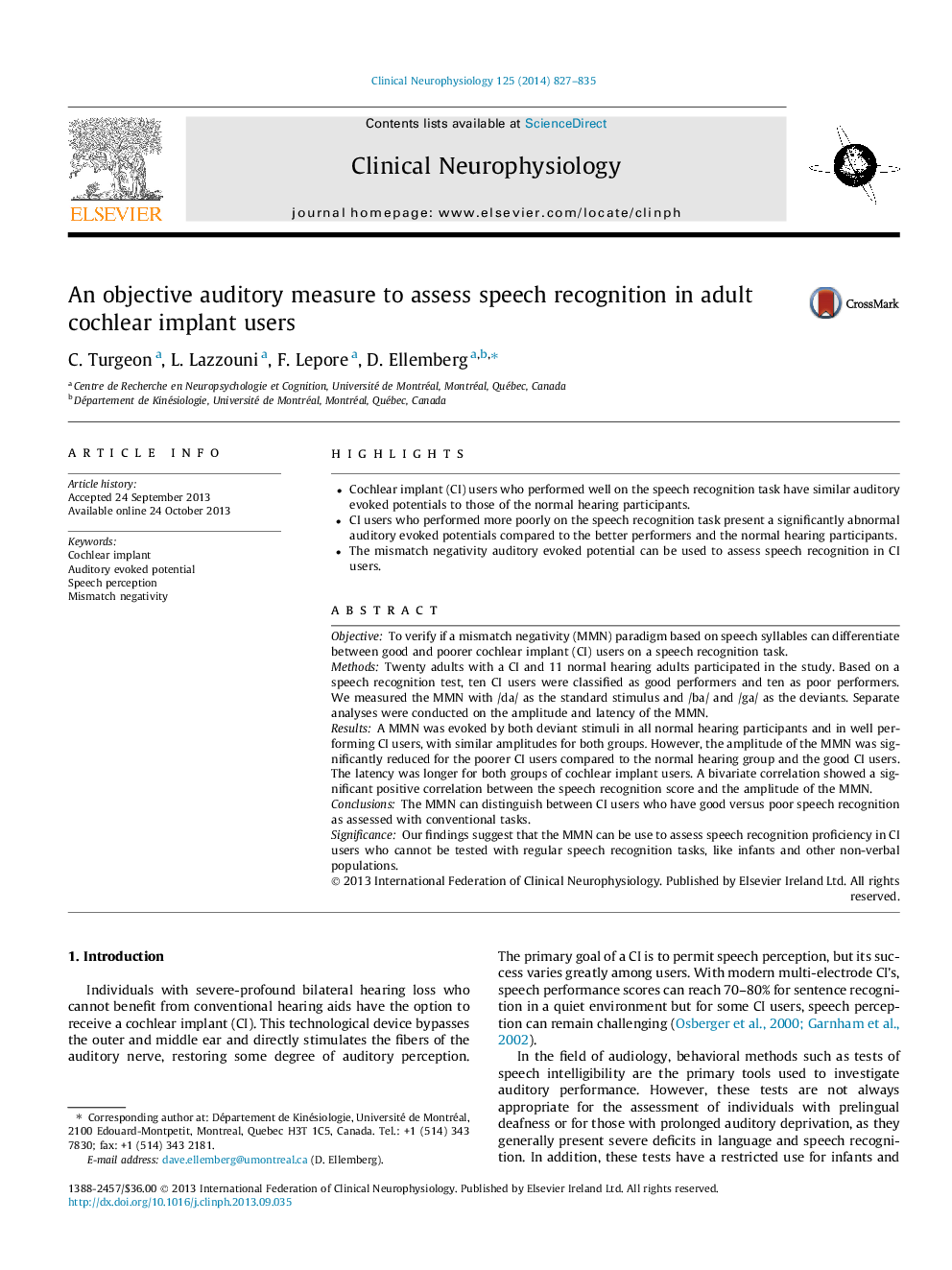| Article ID | Journal | Published Year | Pages | File Type |
|---|---|---|---|---|
| 6008437 | Clinical Neurophysiology | 2014 | 9 Pages |
â¢Cochlear implant (CI) users who performed well on the speech recognition task have similar auditory evoked potentials to those of the normal hearing participants.â¢CI users who performed more poorly on the speech recognition task present a significantly abnormal auditory evoked potentials compared to the better performers and the normal hearing participants.â¢The mismatch negativity auditory evoked potential can be used to assess speech recognition in CI users.
ObjectiveTo verify if a mismatch negativity (MMN) paradigm based on speech syllables can differentiate between good and poorer cochlear implant (CI) users on a speech recognition task.MethodsTwenty adults with a CI and 11 normal hearing adults participated in the study. Based on a speech recognition test, ten CI users were classified as good performers and ten as poor performers. We measured the MMN with /da/ as the standard stimulus and /ba/ and /ga/ as the deviants. Separate analyses were conducted on the amplitude and latency of the MMN.ResultsA MMN was evoked by both deviant stimuli in all normal hearing participants and in well performing CI users, with similar amplitudes for both groups. However, the amplitude of the MMN was significantly reduced for the poorer CI users compared to the normal hearing group and the good CI users. The latency was longer for both groups of cochlear implant users. A bivariate correlation showed a significant positive correlation between the speech recognition score and the amplitude of the MMN.ConclusionsThe MMN can distinguish between CI users who have good versus poor speech recognition as assessed with conventional tasks.SignificanceOur findings suggest that the MMN can be use to assess speech recognition proficiency in CI users who cannot be tested with regular speech recognition tasks, like infants and other non-verbal populations.
